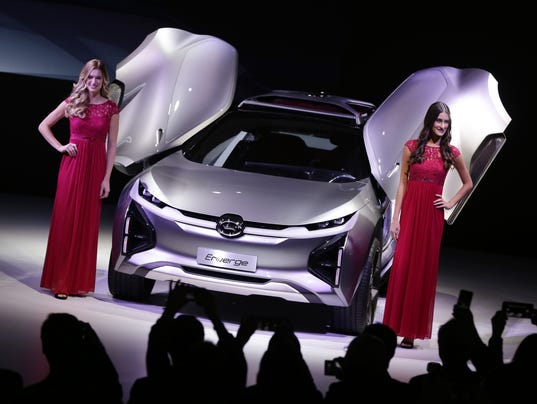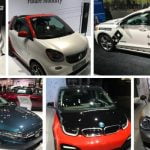
While organizers consider moving the auto show from January to October, new data on media coverage suggests the old format ain’t dead yet.
The North American International Show generated far more press coverage around the world than any other U.S. auto show or Las Vegas’s trendy CES electronics show, and nearly as much as the traditional 500-pound gorilla, the Frankfurt auto show in Germany.
The show’s future faces plenty of questions, but the figures underscore why the Detroit Auto Dealers Association, which runs the show, is not rushing into a decision to abandon the traditional January dates.
“We’d only change if we can create more engagement with people for the vehicles and technologies at the show,” show executive director Rod Alberts said.
“No decision has been made yet. We’re continuing to look at it. We’re not going to act suddenly.”
Press coverage during media days rose 46% this year from 2017. That’s a stunning result for a show that was widely panned as having a few highlights but a shallow overall field of news and new-vehicle debuts. News reports from Detroit during the press days reached 584 million people around the world, compared with 285 million for the Los Angeles auto show, which took place shortly after Thanksgiving.
Perhaps more important as Detroit jockeys for position as the year’s first primo place to introduce new vehicles and technology, the audience for coverage of automotive events at the CES electronics show in Vegas declined 23% from 2017 to 161 million, according to Prime Research.
The figures don’t include the recent New York auto show. New York was a very strong show this year, but it’ll be a surprise if it topped Detroit or LA, which traditionally surpass it handily.
DADA paid for the research, which uses data that automakers, suppliers and other auto shows use to evaluate locations for future events.
Press coverage matters to leading auto shows because it drives automakers’ decisions about where to stage splashy introductions of new vehicles. Those events can draw thousands of people from around the world and pump large sums into the local economy.
“We’re still a great platform for media coming from around the world,” Alberts said.
Economist David Sowerby estimates that NAIAS 2018 generated $480 million for southeast Michigan. That includes everything from ticket sales and money paid to construct elaborate displays to hotels and restaurants for visiting executives, journalists and show goers. Sowerby’s firm, Ancora Advisors, evaluated the show’s impact for DADA.
With results like that you might think DADA’s decision was simple: Leave the show in January.
Press coverage versus other traditional auto shows isn’t the only consideration, though.
The Detroit show also competes with spring shows in Beijing and Shanghai, not to mention vehicle unveilings on social media and at standalone events, as Volvo and Mercedes recently did with the V60 station wagon and A-class, respectively.
Wish as its organizers may, DADA can’t make Beijing and Shanghai go away — but Detroit scored notable success on social media this year.
NAIAS outdid other auto shows for social media reach, impressions and engagements, according to a survey DADA commissioned. CES has more followers, as you’d expect from a show with its roots in consumer electronics, but NAIAS added new followers at a faster rate this year.
“We all have to change to maximize the experience for consumers and automakers, Alberts said. “We’re excited about social media. It’s a big part of the picture.”
A key argument for moving the show to October is the opportunity for attendees to test drive new vehicles and high-tech features, something that’s harder to do in deep winter.
“We’re always evolving,” Alberts said. “We don’t want to leave anything on the table for how manufacturers can present their vehicles.”
[“Source-freep”]




